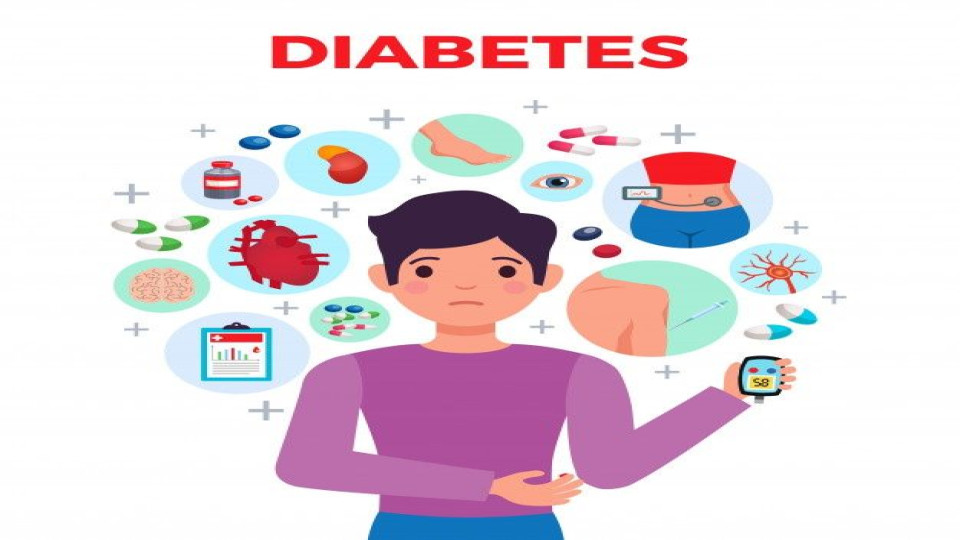

How to Manage Diabetes with Diet and Exercise: Tips from Experts
Why diet and exercise matter for diabetes
Diet and exercise are important parts of a healthy lifestyle for everyone, but especially for people with diabetes. That’s because diet and exercise can help you:
- Lower your blood sugar levels and keep them in your target range
- Lose weight or stay at a healthy weight
- Prevent or delay diabetes complications, such as eye problems, kidney problems, nerve damage, and heart disease
- Feel good and have more energy
How to eat well with diabetes
You don’t have to follow a strict or boring diet to eat well with diabetes. You can still eat your favorite foods, but you might need to eat smaller portions or enjoy them less often. Here are some general tips for eating well with diabetes:
- Eat a variety of healthy foods from all food groups, such as vegetables, fruits, whole grains, lean protein, and low-fat dairy
- Eat superfoods that fuel your body, such as heart-healthy fats (olive oil, nuts, seeds, salmon, avocado), non-starchy vegetables (broccoli, spinach, cucumbers), and protein-rich foods (beans, poultry, fish)
- Limit foods that are high in carbs, fat, salt, or sugar, such as starchy vegetables (potatoes, corn), fried foods (french fries), processed foods (cookies, chips), sweets (cake), and sugary drinks (soda)
- Drink water instead of sweetened beverages or use sugar substitutes to sweeten your coffee or tea
- Plan to eat regular, balanced meals to avoid high or low blood sugar levels and try to eat the same amount of carbs for each meal
- Add more fiber to your diet by eating whole grains, fruits, vegetables, beans, nuts, and seeds Fiber can help lower your blood sugar levels and keep you feeling full longer
- Portion your food by using smaller plates or bowls or using the Diabetes Plate Method This method helps you create well-portioned meals with a balance of vegetables, protein, and carbohydrates
- Make smart choices when dining out by checking the menu online before you go, asking for sauces or dressings on the side, choosing grilled or baked dishes over fried ones, and sharing your meal or taking leftovers home
How to be active with diabetes
You don’t have to be a marathon runner or a gym rat to be active with diabetes. You can find physical activities that you enjoy and fit into your schedule. Here are some tips for being active with diabetes:
- Aim for at least 150 minutes of moderate-intensity aerobic activity per week, such as brisk walking, cycling, swimming, or dancing Aerobic activity helps your body use insulin more efficiently and lowers your blood sugar level
- Do some strength training at least twice a week, such as lifting weights, using resistance bands, or doing bodyweight exercises like push-ups or squats Strength training helps you build muscle and bone mass, which can improve your metabolism and blood sugar control
- Be more active throughout the day by taking the stairs instead of the elevator, parking farther away from the entrance, or taking a walk during your lunch break These small changes can add up to more calories burned and better blood sugar management
- Check your blood sugar before, during, and after exercise to see how it affects your levels You may need to adjust your insulin dose or eat a snack before or after exercise to prevent low blood sugar (hypoglycemia) or high blood sugar (hyperglycemia)
- Wear comfortable shoes and socks that fit well and protect your feet Check your feet for blisters, cuts, or sores after exercise and treat them right away if you find any. People with diabetes are more prone to foot problems that can lead to infections or ulcers
- Drink plenty of water before, during, and after exercise to stay hydrated Dehydration can affect your blood sugar levels and make you feel dizzy or faint
- Have fun and try new activities that you enjoy or challenge you You can join a sports team, take a dance class, go hiking with friends, or play with your kids or pets. The more you enjoy being active, the more likely you are to stick with it!
What to eat
Eating well is one of the most important ways to manage your diabetes. You don’t have to give up your favorite foods, but you might need to eat smaller portions or enjoy them less often. You should also eat a variety of healthy foods from all food groups, such as:
- Vegetables: Choose non-starchy vegetables, such as broccoli, carrots, greens, peppers, and tomatoes. They are low in carbs and high in fiber, vitamins, and minerals. You can also eat some starchy vegetables, such as potatoes, corn, and green peas, but in moderation.
- Fruits: Fruits are rich in antioxidants, vitamins, and fiber. They can also satisfy your sweet tooth. But be careful, fruits also contain natural sugars that can raise your blood sugar levels. Choose fresh or frozen fruits over canned or dried ones, and limit your intake of fruit juices and smoothies.
- Grains: Grains provide carbohydrates, which are the main fuel for your body and brain. But not all grains are created equal. You should choose whole grains over refined ones, such as wheat, rice, oats, quinoa, and barley. Whole grains have more fiber and nutrients than refined grains, and they can help lower your blood sugar and cholesterol levels.
- Protein: Protein helps build and repair your muscles and tissues. It also keeps you full and satisfied. You should choose lean protein sources, such as lean meat, chicken, fish, eggs, nuts, beans, tofu, and cheese. Avoid processed meats, such as bacon, sausage, ham, and hot dogs, which are high in fat and sodium.
- Dairy: Dairy products provide calcium, protein, and vitamin D for your bones and teeth. You should choose low-fat or fat-free milk, yogurt, and cheese. If you are lactose intolerant or vegan, you can opt for lactose-free or plant-based alternatives.
- Fats: Fats are essential for your health, but not all fats are good for you. You should limit saturated fats and trans fats, which are found in butter, cream, cheese, red meat, fried foods, baked goods, and snacks. These fats can raise your bad cholesterol and increase your risk of heart disease. Instead, you should eat more unsaturated fats, which are found in oils (such as olive and canola), nuts (such as almonds and walnuts), seeds (such as flaxseeds and chia seeds), avocados (yes!), and fatty fish (such as salmon and tuna). These fats can lower your bad cholesterol and boost your good cholesterol.
Be active
Being active is another key way to manage your diabetes. Physical activity helps lower your blood sugar levels by making your muscles use glucose for energy. It also improves your insulin sensitivity, meaning that your body needs less insulin to keep your blood sugar levels in check.
Exercise also has many other benefits for your health and well-being. It can help you:
- Lose weight or maintain a healthy weight
- Lower your blood pressure and cholesterol levels
- Strengthen your muscles and bones
- Reduce stress and anxiety
- Boost your mood and self-esteem
- Prevent or delay diabetes complications
So how much exercise do you need? The general recommendation is to aim for at least 150 minutes of moderate-intensity aerobic activity per week. This means doing something that gets you out of breath, such as:
- Walking briskly
- Cycling
- Swimming
- Dancing
- Gardening
You can also do some vigorous-intensity aerobic activity if you prefer, such as:
- Running
- Jogging
- Skipping
- Aerobics
- HIIT (high-intensity interval training)
You should also do some strength training exercises at least twice a week. This means doing something that makes your muscles work harder than usual, such as:
- Lifting weights
- Doing push-ups
- Doing squats
- Doing lunges
- Doing planks
You don’t need a gym membership or fancy equipment to exercise. You can be active anywhere as long as you enjoy it and have fun. You can also try different activities to keep things interesting and avoid boredom.
Tips from experts
To help you manage your diabetes with diet and exercise, here are some tips from experts that you can follow:
- Plan ahead: Make a meal plan and a shopping list for the week. This will help you eat healthier and avoid impulse buying. You can also prepare some meals in advance and freeze them for later. For exercise, schedule some time in your calendar and stick to it. You can also set some goals and track your progress.
- Monitor your blood sugar: Check your blood sugar levels before and after eating and exercising. This will help you see how different foods and activities affect your blood sugar levels. You can also adjust your insulin dose or carbohydrate intake accordingly. You should also keep a record of your blood sugar levels and share it with your health care team.
- Stay hydrated: Drink plenty of water throughout the day. Water helps flush out toxins, regulate your body temperature, and prevent dehydration. Avoid sugary drinks, such as soda, juice, and sports drinks, which can spike your blood sugar levels. You can also drink unsweetened tea, coffee, or water with lemon or cucumber for some flavor.
- Snack smart: Snacking can help you control your hunger and prevent overeating at meals. But you should choose healthy snacks that are low in carbs and high in protein and fiber, such as nuts, cheese, yogurt, hummus, or fruit. Avoid snacks that are high in sugar, fat, and salt, such as chips, cookies, candy, or pastries.
- Treat yourself: Managing diabetes doesn’t mean you have to deprive yourself of the foods you love. You can still enjoy them occasionally and in moderation. For example, you can have a small piece of cake or a scoop of ice cream once in a while as long as you balance it with other healthy foods and exercise. You can also try some diabetes-friendly recipes that use natural sweeteners, such as stevia or monk fruit, instead of sugar.
- Get support: Managing diabetes can be challenging and stressful at times. But you don’t have to do it alone. You can get support from your family, friends, health care team, or other people with diabetes. You can also join a diabetes support group or an online community where you can share your experiences, tips, and advice with others who understand what you’re going through.
Conclusion
Diabetes is a condition that affects how your body uses glucose. But you can still live a healthy and happy life by managing your diabetes with diet and exercise. By eating well and being active, you can lower your blood sugar levels, improve your insulin sensitivity, and prevent or delay diabetes complications.
You can also enjoy many other benefits for your health and well-being, such as losing weight, lowering your blood pressure and cholesterol levels, strengthening your muscles and bones, reducing stress and anxiety, boosting your mood and self-esteem, and having more energy.
So what are you waiting for? Start managing your diabetes with diet and exercise today! You’ll be amazed by how much better you’ll feel!





